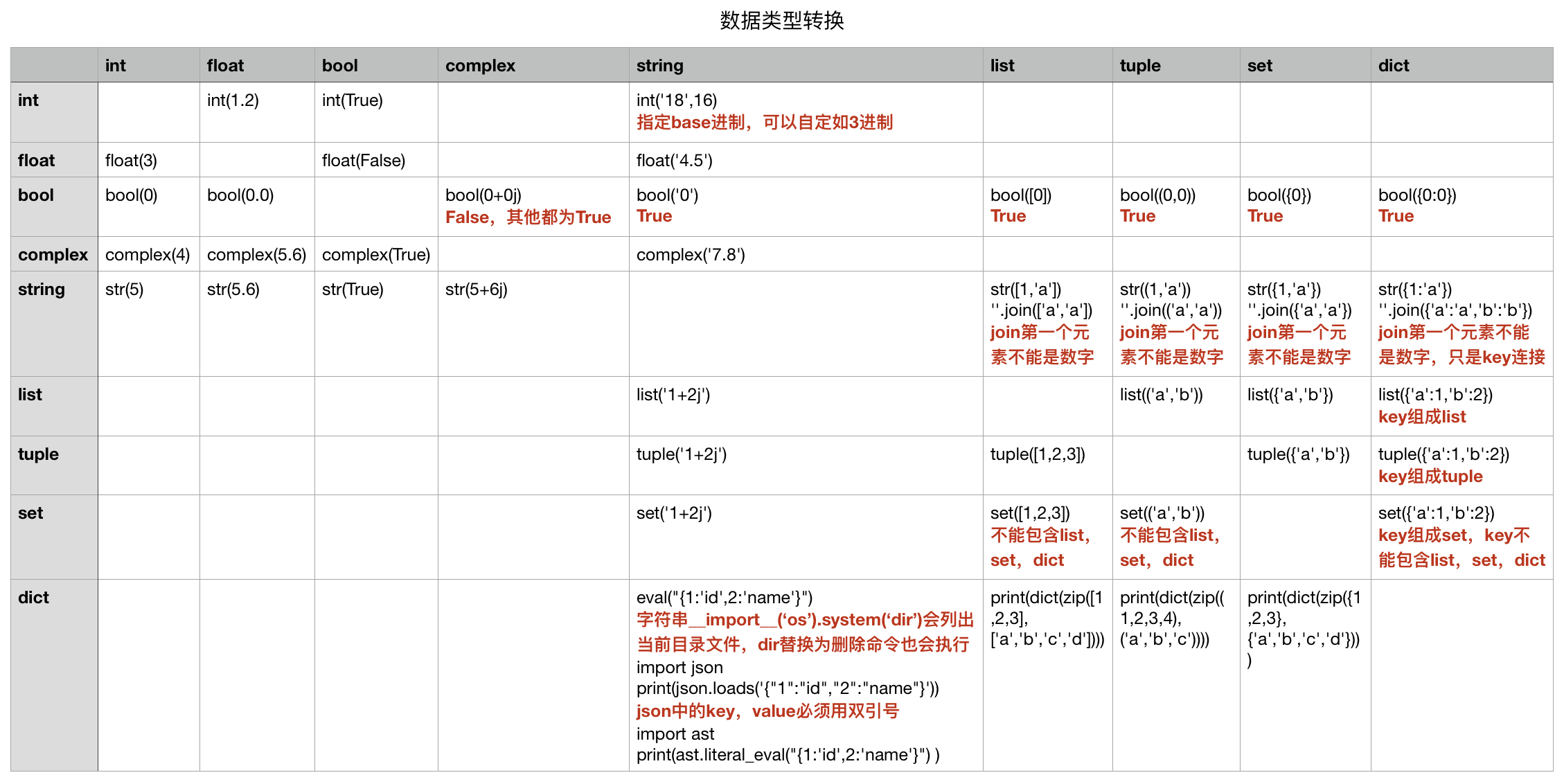I. 數據類型 Python3將程式中的任何內容統稱為對象(Object),基本的數據類型有數字和字元串等,也可以使用自定義的類(Classes)創建新的類型。 Python3中有六個標準的數據類型: Number(數字) String(字元串) List(列表) Tuple(元組) Set(集合) ...
I. 數據類型
Python3將程式中的任何內容統稱為對象(Object),基本的數據類型有數字和字元串等,也可以使用自定義的類(Classes)創建新的類型。
Python3中有六個標準的數據類型:
- Number(數字)
- String(字元串)
- List(列表)
- Tuple(元組)
- Set(集合)
- Dictionary(字典)
Python3的六個標準數據類型中:
- 不可變數據(3 個):Number(數字)、String(字元串)、Tuple(元組);
- 可變數據(3 個):List(列表)、Dictionary(字典)、Set(集合)。
1. Number:int, float, bool, complex
a, b, c, d = 1, 2.3, True, 4+5j
print(type(a), type(b), type(c), type(d), type(a+b+c+d), a+b+c+d)
<class 'int'> <class 'float'> <class 'bool'> <class 'complex'> <class 'complex'> (8.3+5j)
2. String:
Python中的字元串用單引號'或雙引號"括起來,同時使用反斜杠\轉義特殊字元。r或R表示原始字元串。
s = r'this is raw string \n \t.'
print(type(s), s)
<class 'str'> this is raw string \n \t.
3. List:
列表是寫在方括弧[]之間,用逗號分隔開的元素列表。列表的元素可以是數字、字元串和列表。
4. Tuple:
元組是寫在小括弧()之間,用逗號分隔開的元素列表。
t = (1, 2.3, True, 4+5j, (6, 'abc', ['d', {'id': 9, 'value': 'dict'}]))
print(type(t), t)
<class 'tuple'> (1, 2.3, True, (4+5j), (6, 'abc', ['d', {'id': 9, 'value': 'dict'}]))
5. Set:
集合可以使用{}或set()函數來創建,創建空集合必須用set()。
基本功能是測試成員關係和刪除重覆元素。
s1 = {1.2, 4+5j, 'abc', 'abc', 'd'}
s2 = set('abcdde')
print(type(s1), s1, type(s2), s2)
print(s1 - s2, s1 | s2, s1 & s2, s1 ^ s2)
<class 'set'> {1.2, (4+5j), 'd', 'abc'} <class 'set'> {'c', 'a', 'd', 'e', 'b'}
{1.2, (4+5j), 'abc'} {1.2, 'c', 'a', 'd', (4+5j), 'abc', 'e', 'b'} {'d'} {'c', 1.2, 'a', (4+5j), 'abc', 'e', 'b'}
6. Dictionary:
字典通過{}或dict()函數創建,是無序的key:value映射的集合。key必須為不可變類型且唯一。
d1 = {1: 'abc', 'name': {'cn': 'Chinese name', 'en': 'English name'}, (True, 4+5j): [1, 'abc']}
d2 = dict([(1, 'abc'), ('name', {'cn': 'Chinese name', 'en': 'English name'})])
d3 = dict(name={'cn': 'Chinese name', 'en': 'English name'}, one='abc')
print(type(d1), d1, d1[(True, 4+5j)])
print(type(d2), d2, d2[1])
print(type(d3), d3, d3['one'])
<class 'dict'> {1: 'abc', 'name': {'cn': 'Chinese name', 'en': 'English name'}, (True, (4+5j)): [1, 'abc']} [1, 'abc']
<class 'dict'> {1: 'abc', 'name': {'cn': 'Chinese name', 'en': 'English name'}} abc
<class 'dict'> {'name': {'cn': 'Chinese name', 'en': 'English name'}, 'one': 'abc'} abc
II.數據類型轉換

參考:簡明Python教程(英文原版)、菜鳥教程



